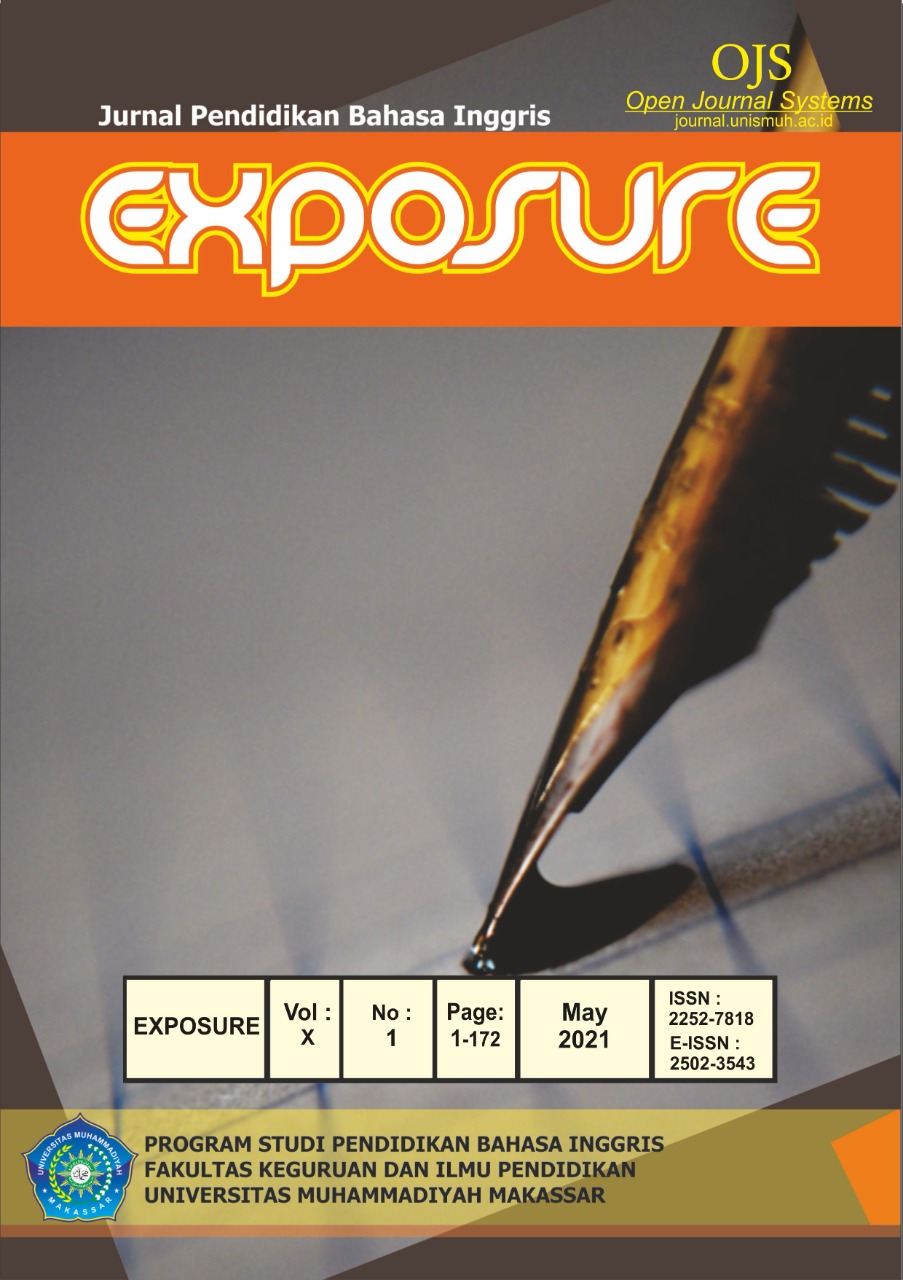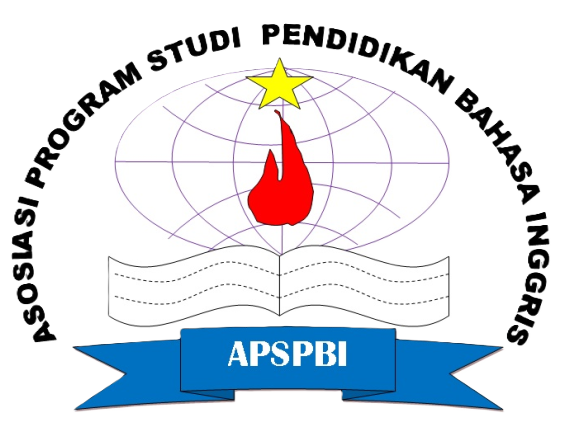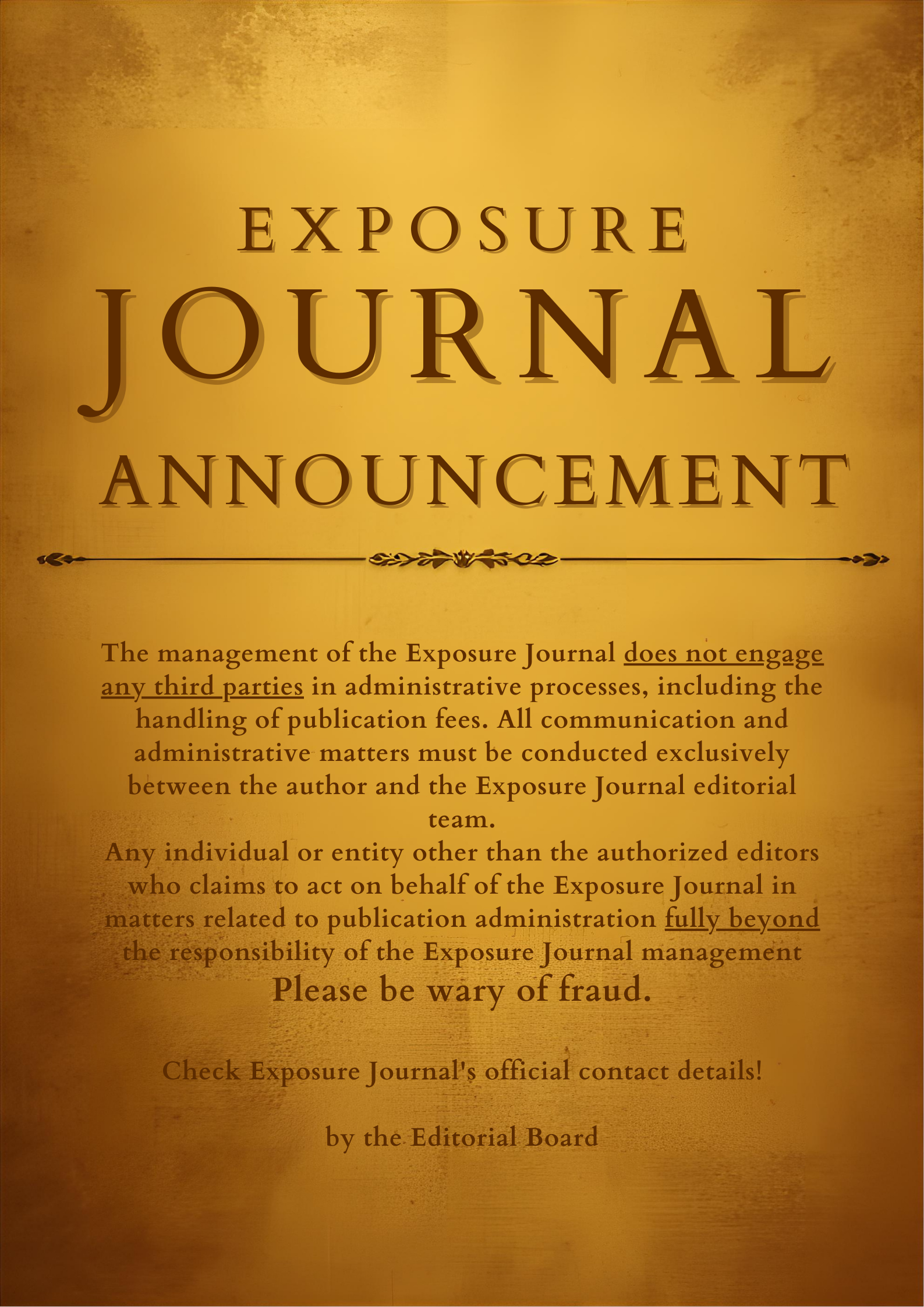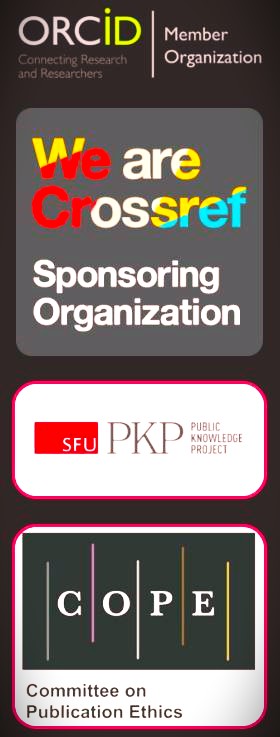ANALYSIS OF VAK STUDENT LEARNING STYLE PGSD UKI TORAJA
DOI: https://doi.org/10.26618/exposure.v10i1.4510
VAK Learning Style, Student of PGSD UKI Toraja, Learning Outcomes
Abstract
One of the factors that affect a person's learning outcomes is their learning style(Aryo Andri Nugroho, Ida Dwijayanti 2017). The division of student classes, taking into account each individual's learning styles; will greatly aid instructors in preparing teaching methods and materials that are appropriate for the students' learning styles. The VAK (Visual, Auditory and Kinesthetic) learning style was developed by Rita Dunn and Kennenth Dunn(Lehmann dan Ifenthaler 2012). Children with visual learning styles typically learn through external visual relationships, children with auditory learning styles learn more easily through listening, and children with kinesthetic learning styles learn through physical movements to input information into their brain(Sari n.d.).The aim of this study is to describe the results of the VAK analysis of the learning style (visual, auditory and kinesthetic) of students in the UKI Toraja PGSD study program in order to address issues related to the National Research Master Plan (RIRN) on Social Humanities, Cultural Arts, and education bureau can solve. Domestic studies on educational and learning technology. This research will be carried out in 3 (three) stages. The first phase was to observe the VAK (Visual, Auditory and Kinesthetic) learning style of the UKI Toraja PGSD study program students. In the second phase, data was collected and direct interviews were conducted with relevant sources on the VAK (Visual, Auditory and Kinesthetic) learning style of students in the UKI Toraja PGSD study program. The third phase is to manage and analyze the results of face-to- face interviews and to publish the results of research on the VAK learning styles (visual, auditory and kinesthetic) of students in the UKI Toraja PGSD study program. The results of the analysis of the VAK learning style of students in the UKI Toraja PGSD study program for the 2019/2020 academic year. This research is a descriptive study with a qualitative approach. The subjects of this study were all students in the 2018/2019 primary school teacher-training course. The instrument used in this study was a questionnaire, the content of which was adapted from 18 elements from the versions of Rita and Kenneth Dunn. These are then grouped into 6 subsections of learning styles that are common to students, namely: Visual, Auditory, and Kinesthetic. The data analysis used in this study is a descriptive analysis using statistical methods. Based on the results of the analysis of the study style questionnaire of 2018 UKI Toraja PGSD students, of which the respondents were 282 students, the auditory was 34.2%, the visual 44.7% and the kinesthetic 21.1%. From the above data, it can be concluded that the class of PGSD students in 2018 has a predominantly visual learning style.
References
Akram Awla, Hawkar.(2014). “Learning Styles and Their Relation to Teaching Styles.” International Journal of Language and Linguistics 2(3): 241.
Aryo Andri Nugroho, Ida Dwijayanti, Rizky Esti Utami.(2017). 1 Universitas PGRI Semarang Press Analisis Gaya Belajar Mahasiswa Pendidikan Matematika Universitas PGRI Semarang
Angkatan 2015. Semarang. Analisis Gaya Belajar Mahasiswa Pendidikan%0amatematika Universitas Pgri Semarang Angkatan 2015.
Hasanudin, Cahyo, dan Ayu Fitrianigsih. (2019). “Analisis Gaya Belajar Mahasiswa Pada Pembelajaran Flipped Classroom.” Jurnal Pendidikan Edutama 6(1): 31.
Julianti, Ira Ainur Rohmah. (2016). “Analisis karakteristik Gaya Belajar Siswa dalam Pembelajaran IPS Kelas V SDN di Kecamatan Godong Kabupaten Grobogan.”
Jumanto. (2010). “Gaya Belajar Siswa.” Buku Ajar BI: 25–33. http://file.upi.edu/Direktori/KD-SUMEDANG/197808222005012003-DIAH_GUSRAYANI/Buku_Ajar_BI/bab2-gaya_belajar_siswa.pdf.
Lehmann, Thomas, dan Dirk Ifenthaler. (2012). “Influence of students’ learning styles on the effectiveness of instructional interventions.” IADIS International Conference on Cognition and Exploratory Learning in Digital Age, CELDA 2012: 180–88.
Marfuah, Zuroh. (2016). “Hubungan Gaya Belajar Visual, Auditorial dan Kinestik dengan Hasil Belajar Matematika.” Journal of Chemical Information and Modeling.
Moussa, Nahla M. (2014). “The importance of learning styles in education.” Institute for Learning Styles Journal 1(2): 19–27. http://www.auburn.edu/academic/education/ilsrj/Journal Volumes/Fall 2014 Vol 1 PDFs/Learning Styles Nahla Moussa.pdf.
Nihayah, Fista. (2011). “Profil Gaya Belajar ( Learning Style ) Dan Ipk Mahasiswa Jurusan Biologi.”
Papilaya, Jeanete Ophilia, dan Neleke Huliselan. (2016). “Identifikasi Gaya Belajar Mahasiswa.” Jurnal Psikologi Undip 15(1): 56.
Patintingan, Mersilina L.;, Reni Lolotandung, dan Theresyam Kabanga. (2019). “VAK Learning Style Identification of PGSD UKI Toraja Students.” ICSTEE.
Pourhosein Gilakjani, Abbas. (2011). “Visual, Auditory, Kinaesthetic Learning Styles and Their Impacts on English Language Teaching.” Journal of Studies in Education 2(1): 104.
Prasetyo, Tri Ferga, dan Muhammad Iqbal. (2016). “Sistem Pakar Identifikasi Gaya Belajar Mahasiswa Berbasis Web.” Seminar Nasional Sains dan Teknologi 2016 Fakultas Teknik Universitas Muhammadiyah Jakarta (November): 2. https://jurnal.umj.ac.id/index.php/semnastek/article/view/776.
Rosidah, Noneng Siti. (2016). Vol. 1 No. ejournal.uin-suka.ac.id Jurnal pendidikan Madrasah Analisis Gaya Belajar Siswa Berprestasi. Yogyakarta. http://ejournal.uin-suka.ac.id/tarbiyah/index.php/JPM/article/view/1220.
Sari, Ariesta Kartika. “Ariesta Kartika Sari 1.” (031).
Umy Zahroh, 020. (2014). “Kecenderungan Gaya Belajar Mahasiswa dalam Menyelesaikan Masalah Fungsi Bijektif.” Jurnal Kebijakan dan Pengembangan Pendidikan 2(1): 72–81.
Downloads
Additional Files
Published
How to Cite
Issue
Section
License
Authors who publish with this journal agree to the following terms:
In order to assure the highest standards for published articles, a peer review policy is applied. In pursue of the compliance with academic standards, all parties involved in the publishing process (the authors, the editors and the editorial board and the reviewers) agree to meet the responsibilities stated below in accordance to the Journal publication ethics and malpractice statement.
Duties of Authors:
- The author(s) warrant that the submitted article is an original work, which has not been previously published, and that they have obtained an agreement from any co-author(s) prior to the manuscript’s submission;
- The author(s) should not submit articles describing essentially the same research to more than one journal;
- The authors(s) make certain that the manuscript meets the terms of the Manuscript Submission Guideline regarding appropriate academic citation and that no copyright infringement occurs;
- The authors(s) should inform the editors about any conflict of interests and report any errors they subsequently, discover in their manuscript.
Duties of Editors and the Editorial Board:
- The editors, together with the editorial board, are responsible for deciding upon the publication or rejection of the submitted manuscripts based only on their originality, significance, and relevance to the domains of the journal;
- The editors evaluate the manuscripts compliance with academic criteria, the domains of the journal and the guidelines;
- The editors must at all times respect the confidentiality of any information pertaining to the submitted manuscripts;
- The editors assign the review of each manuscript to two reviewers chosen according to their domains of expertise. The editors must take into account any conflict of interest reported by the authors and the reviewers.
- The editors must ensure that the comments and recommendations of the reviewers are sent to the author(s) in due time and that the manuscripts are returned to the editors, who take the final decision to publish them or not.
Authors are permitted and encouraged to post online a pre-publication manuscript (but not the Publisher’s final formatted PDF version of the Work) in institutional repositories or on their Websites prior to and during the submission process, as it can lead to productive exchanges, as well as earlier and greater citation of published work (see The Effect of Open Access). Any such posting made before acceptance and publication of the Work shall be updated upon publication to include a reference to the Publisher-assigned DOI (Digital Object Identifier) and a link to the online abstract for the final published Work in the Journal.














